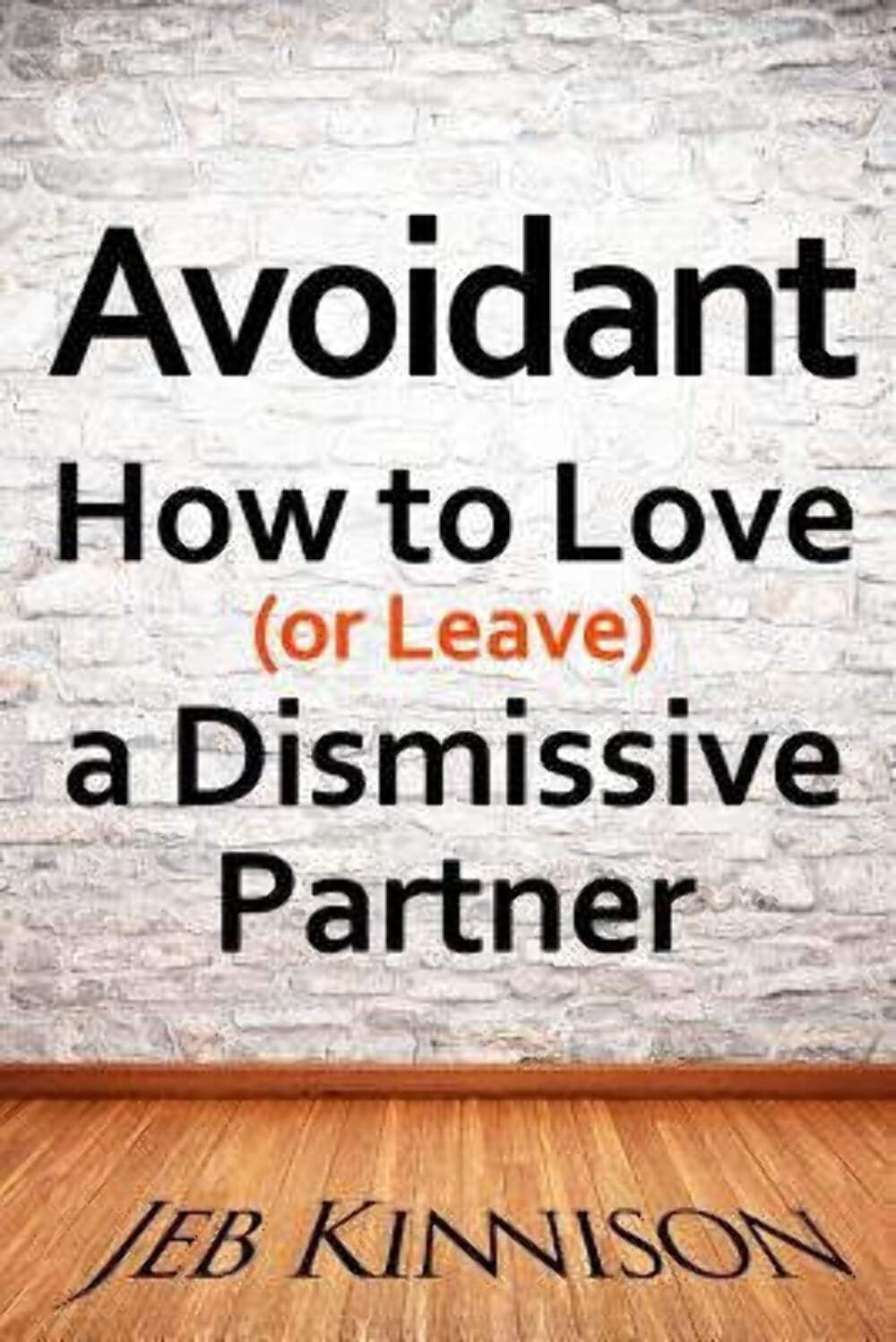
Title

Avoidant: How to Love (or Leave) a Dismissive Partner,Used
Processing time: 1-3 days
US Orders Ships in: 3-5 days
International Orders Ships in: 8-12 days
Return Policy: 15-days return on defective items
Jeb Kinnisons previous book on finding a good partner by understanding attachment types (Bad Boyfriends: Using Attachment Theory to Avoid Mr. (or Ms.) Wrong and Make You a Better Partner) brought lots of readers to JebKinnison.com, where the most askedabout topic was how to deal with avoidant lovers and spouses. There are many readers in troubled marriages now who are looking for help, as well as people already invested in a relationship short of marriage whod like help deciding if they should stick with it. People in relationships with Avoidants struggle with their lack of responsiveness and inability to tolerate real intimacy. Relationships between an Avoidant and a partner of another attachment type are the largest group of unhappy relationships, and people who love their partners and who may have started families and had children with an Avoidant will work very hard to try to make their relationships work better, out of love for their partner and children as well as their own happiness. The Avoidants in these relationships are more than likely unhappy with the situation as wellretreating into their shells and feeling harassed for being asked to respond with positive feeling when they have little to give. The other reason why so many people are looking for help on this topic is that it is an almost impossible problem. Couples counsellors rarely have the time or knowledge to work with an Avoidant and will often advise the spouse to give up on a Dismissive, especially, whose lack of responsiveness looks like cruelty or contempt (and sometimes it is!) Yet there is some hopethough it may take years and require educating the Avoidant on the patterns of good couples communication, if both partners want to change their patterns toward more secure and satisfying models, it can be done. How can you tell if your partner is avoidant? Does your partner: Seem not to care how you feel? Frequently fail to respond to direct questions or text messages? Accuse you of being too needy or codependent? Talk of some past lover as ideal and compare you to them? Act coldly toward your children and the needy? Remind you that he or she would be fine without you? Withhold sex or affection as punishment? If that sounds familiar, then your partner is likely avoidant. At about 25% of the population, Avoidants have shorter, more troubled relationships, and tend to divorce more frequently and divorce again if remarried. What can be done? Individual therapy for the motivated Avoidant can move their default attachment style toward security, and to the extent that problems have been made worse by an overly clingy and demanding anxiouspreoccupied partner, therapy can help there, as well. Partners who read and absorb the lessons of these books will have a head start on noticing and restraining themselves when they are slipping into an unsatisfying communications pattern, and an intellectual understanding of the bad patterns is a step toward unlearning them. Not all difficult Avoidants can be reformed; that depends on both partners, the depth of their problems, and their motivation and ability to change over time. But many troubled marriages and relationships can be greatly improved, and the people in them can learn to be happier, with even modest improvements in understanding how they can best communicate support for each other. For those reading who have not read Bad Boyfriends or are less familiar with attachment types, a beefedup section on attachment theory and attachment types from Bad Boyfriends is included. Regular readers of JebKinnison.com will find edited versions of some relevant material previously posted there.
⚠️ WARNING (California Proposition 65):
This product may contain chemicals known to the State of California to cause cancer, birth defects, or other reproductive harm.
For more information, please visit www.P65Warnings.ca.gov.
- Q: What is the main topic of 'Avoidant: How to Love (or Leave) a Dismissive Partner'? A: The book focuses on understanding relationships with avoidant partners, particularly how to navigate the challenges that arise due to their attachment style.
- Q: Who is the author of this book? A: The author is Jeb Kinnison, known for his expertise in attachment theory and relationship dynamics.
- Q: What are some signs that my partner might be avoidant? A: Signs include a lack of responsiveness to emotional needs, avoidance of deep conversations, and a tendency to withhold affection or intimacy.
- Q: Is this book suitable for people in any type of relationship? A: Yes, it is helpful for anyone dealing with an avoidant partner, whether married, in a long-term relationship, or dating.
- Q: How can the book help me improve my relationship? A: It offers insights into attachment theory, communication strategies, and practical advice for fostering a healthier relationship dynamic.
- Q: What is the length of the book? A: The book has 228 pages, providing a comprehensive look at the challenges of loving an avoidant partner.
- Q: When was 'Avoidant: How to Love (or Leave) a Dismissive Partner' published? A: The book was published on October 2, 2014.
- Q: Does the book include any exercises or practical tips? A: Yes, it includes strategies for both partners to improve communication and understanding within their relationship.
- Q: Can this book assist therapists or counselors? A: Yes, therapists may find it useful as a resource for understanding avoidant attachment styles and guiding their clients.
- Q: Are there any other books by Jeb Kinnison that I should read? A: Yes, 'Bad Boyfriends: Using Attachment Theory to Avoid Mr. (or Ms.) Wrong' is a recommended read for more insights on attachment types.

